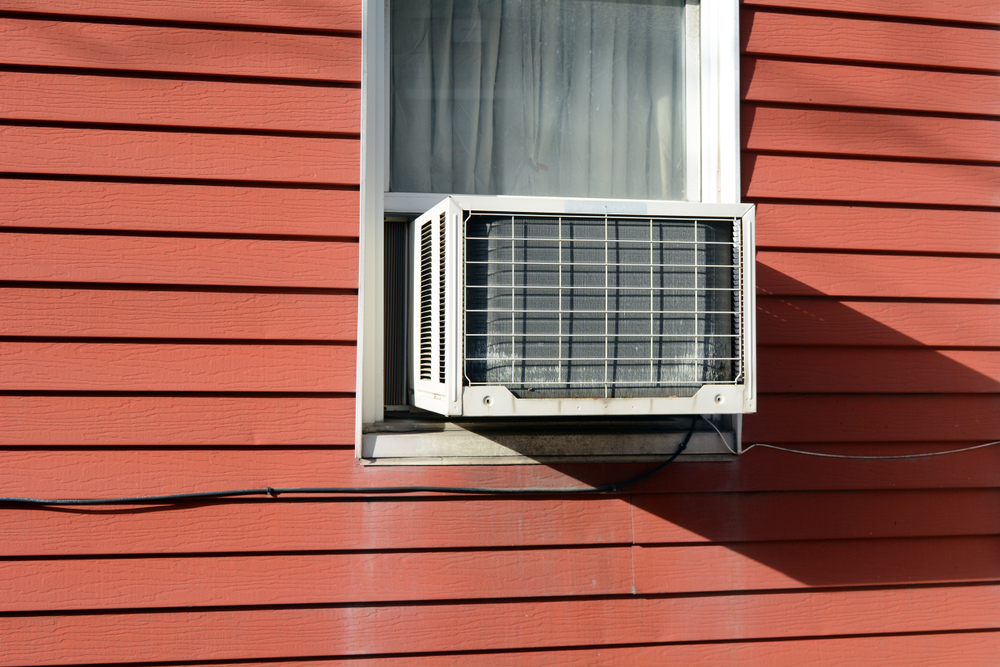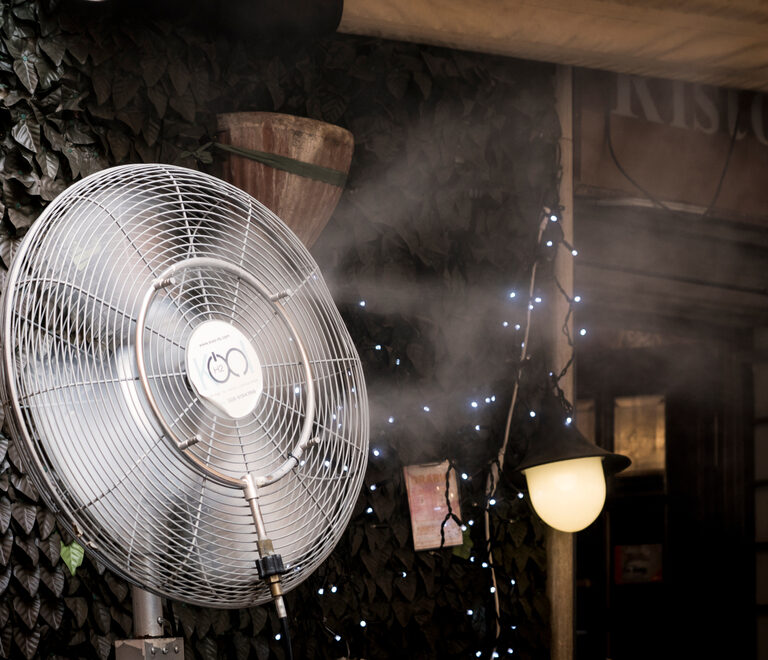When the summer heat kicks up, you’ll want to find a good way to cool down. One of the most obvious choices is air conditioning. But air conditioners are power-hungry and expensive. So, what other options do you have?
One option is to make your own air conditioner. There are tons of different designs all over the internet. But they’re not all equally effective, and they might not work how you think. With that, let’s first look at some of the best DIY air conditioners we’ve found.
The Best DIY Air Conditioners We’ve Found
There are tons of ways that you can make a DIY air conditioner. Unfortunately, there’s a lot of flawed designs and unstated caveats with a lot of these.
Many budget DIY air conditioners – such as this battery-powered desktop AC, or this soda bottle fan AC – are quick and easy to make. But their effectiveness is temporary and limited, especially in higher temperatures.
Even the best DIY air conditioners have their fair share of flaws. So instead of listing off a bunch of random projects for the sake of filling a list, we’re going to take an objective look at the best of the best.
The 5-Gallon Bucket Air Conditioner
The 5-gallon bucket air conditioner is a classic DIY air conditioner that can cool you down quickly.
What You’ll Need
The idea is to mount an intake fan on the top of a 5-gallon bucket and create exhaust vents on the side. This is one of the simpler air conditioners you can make, and it’s relatively cheap.
It works great as a personal cooler. But honestly, it won’t cool a whole room, due to its size.
The Table Fan Air Conditioner
One of the coolest looking DIY air conditioners that can give your table fan a cool breeze.
- What You’ll Need
- Table fan
- Copper tubing
- Vinyl tubing
- Water pump
- Zip ties
- Portable Cloth Cooler
This air conditioner uses a water pump to push ice-cold water through the copper tubing coiled around the front cage of the fan. Copper tubing is used both for its pliability and thermal conductivity. As the air passes through the fan, it’s cooled by the chilled copper tubing, giving you a cool breeze.
With this air conditioner, the more copper tubing on the fan, the more cooling you’ll get. However, more copper tubing on the fan also means less airflow.
You may opt to run a separate line of copper tubing on the back of the fan for greater cooling without impeding too much airflow. But you may need an additional pump and copper tubing to pull this off, and you’ll need to arrange it strategically to keep airflow optimal.
The Portable Cooler Air Conditioner
The portable cooler air conditioner is one of the most common DIY air conditioners around, and is a great way to provide long-lasting cooling.
What You’ll Need
- Portable cooler
- Adjustable vent duct
- DAP Kwik Seal Plus
- 4-inch inline fan
- 4-inch elbow dust hose connector
- 4-inch PVC pipe elbow
- 4-inch PVC pipe
- 4-inch snap-in shower drain
You can find many different portable cooler air conditioners online. However, this one stands out to us because it’s smart about how it uses the ice to cool the air.
Rather than simply feeding hot air directly into the cooler over the ice, it sends the air into a small metal duct buried under the ice inside the cooler. This allows the air to cool down before reaching the ice directly. Not only does it pump out colder air than other cooler AC’s, but it’ll also help the ice last longer.
However, the biggest thing to keep in mind with this AC is that it’s rather expensive. If you don’t have many of the supplies lying around already, it’ll cost as much, if not more, than a cheap window air conditioner.
It’s also a complex project. The complexity is part of the charm of the design, and it does lead to more effective cooling. But putting this thing together will take some time and effort, making it best for serious DIY enthusiasts.
The Large-Room Window Swamp Cooler Air Conditioner
By far the most creative DIY air conditioner we’ve found is the large-room window swamp cooler.
What You’ll Need
- Evaporative cooler pads
- Box fan
- Vinyl tubing
- Water pump
- Large plastic tote
- Wood
- PVC pipe
Much like the portable cooler air conditioner, this project is rather complex. However, it’s quite an effective set-up, with the potential to drop temps in your home by 20 degrees or more. It will also save you money in the long-run, as it uses a fraction of the electricity a normal window AC unit uses.
The way it works is by using the pump to constantly wet the evaporative cooling pads. Meanwhile, the box fan exhausts air outside another window. This creates a vacuum that pulls in air through the cooling pads and helps avoid recirculating the air inside to keep humidity down.
Of course, there are some major caveats with this cooler that means it’s not suitable for everyone.
First, it’s a swamp cooler. While it does a good job of minimizing potential humidity, it’s still not suitable for humid climates. You’ll also need to place the cooler and the water in a shaded area to prevent the water from heating too quickly.
Finally, you’ll need to have the exhaust fan at a proximal distance to the cooler in order to create the vacuum effect. That means the more space and objects between the cooler and the exhaust fan, the longer it’ll take to cool your house down.
Taking a Closer Look at DIY Air Conditioners
Now that we’ve gone over some of the best DIY air conditioners we’ve found, let’s take a closer look at some other useful information. This information can help you decide whether you should make your own air conditioner, and how to make it as effective as possible.
Higher Temps Lead to Diminishing Returns
As temperatures rise, the need for cooling increases. However, the higher the temperature, the less effective most DIY air conditioners are. Let’s look at some of the reasons for this.
Ice Melts Quicker
First, the higher the temperature is, the quicker your ice will melt. As the ice melts, the air conditioner gradually becomes less effective at cooling.
There’s More to Cool
The hotter it is, the more cold air the AC needs to pump into the room to lower the temperature. And even after you cool your space, outside air will still make its way in. The hotter that outside air is, the more cooling you’ll need to maintain a cool environment.
Increased Humidity
Just as ice melts more quickly in higher temperatures, water evaporates more quickly, as well. This ultimately leads to more humidity in the air.
If you live in an arid climate, then a little humidity can go a long way to help you stay cool. But if you’re in a humid climate, adding more humidity to the air will only make you more miserable.
Using Loose Ice vs. Bottles of Ice
For DIY air conditioners, the loose ice versus bottles of ice debate is a contentious one. Both have advantages and disadvantages you should keep in mind when deciding which you’ll use with your homemade air cooler.
Loose Ice
Blowing air directly over ice results in colder air than bottles of ice. This is because the air makes direct contact with the ice, allowing for greater heat exchange. It also provides more surface area for the air to make contact with.
However, because the warm air makes better contact loose ice, the ice melts quicker than bottled ice. Also, since the warm air passes directly over the ice, it allows more water to evaporate than ice in a bottle.
If you live in an arid climate, or you’re planning on using your DIY air conditioner away from home, then using loose ice is the best way to go.
Bottles of Ice
Bottles of ice are a renewable alternative to loose ice. Because the ice is contained within a sealed container, the water stays contained as it melts (save for a little condensation). This means that bottles of ice will produce less humidity.
However, bottles leave less ice exposed to the air, leading to less heat exchange. That heat exchange is further impeded by the plastic buffer between the air and the ice.
Overall, bottles are optimal if you’re using your cooler at home, and you want to keep humidity down.
Making Things Colder… With Salt?
Some people believe using salt can create colder ice, since salt lowers water’s freezing point. But a lower freezing point doesn’t mean colder ice. It just means the ice will melt at a lower temperature. The temperature of the ice is only as cold as the freezer that makes it.
Nevertheless, using salt water in some DIY air conditioners can help lower the temperature of the air being emitted. The table fan air conditioner is one such example. Because it uses the cold water in the copper tubing to cool the air, it’s possible to use salt water’s lower freezing point to your advantage.
However, using salt water in the system will cause the copper tubing to corrode. That means it’s probably best if you avoid using salt altogether.

Is It Worth It to Make a DIY Air Conditioner?
Making your own air conditioner is a fun little DIY project that can help cool you better than a regular fan. But it just can’t compare to a standard window AC. You can find small brand-new window units as cheap as $100. This can make them more affordable than some of the more effective DIY air conditioners we’ve found.
Window air conditioners also pull moisture out of the air, which is paramount in humid climates. DIY air conditioners, on the other hand, put moisture into the air, limiting their effectiveness in humid climates.
That means homemade air conditioners only have one notable advantage over standard AC’s: lower energy consumption.
Cooling Down
When you’re looking to beat the summer heat without spending a ton of money, you might try your hand at making your own air conditioner. But remember, even the best DIY air conditioners can’t contend with the cooling power of even the cheapest store-bought AC’s.
If you’re a huge DIY enthusiast or super thrifty spender in a dry climate, making your own air conditioner is a nice way to keep cool. Otherwise, you’re better off finding a cheap window air conditioner.
